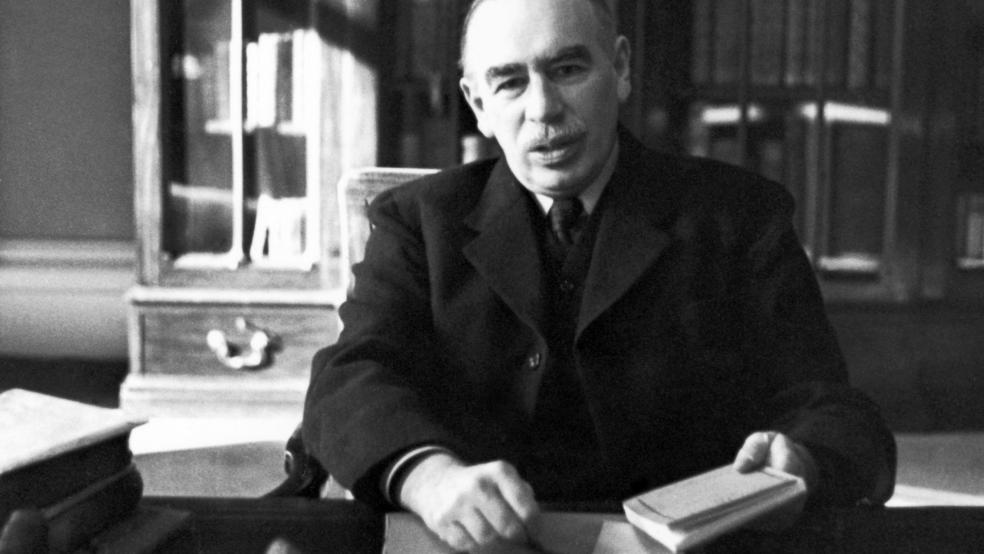The ongoing war between the Keynesians and the anti-Keynesians appears to be heating up again. The catalyst for this round of fighting is The Keynesian Illusion by David K. Levine, which elicited responses such as this and this from Brad DeLong and Nick Rowe.
The debate is about the source of economic fluctuations and the government’s ability to counteract them with monetary and fiscal policy. One of the issues is the use of “old fashioned” Keynesian models – models that have supposedly been rejected by macroeconomists in favor of modern macroeconomic models – to explain and understand the Great Recession and to make monetary and fiscal policy recommendations. As Levine says, “Robert Lucas, Edward Prescott, and Thomas Sargent … rejected Keynesianism because it doesn't work… As it happens we have developed much better theories…”
Related: Why Politics and Economics Are a Toxic Cocktail
I believe the use of “old-fashioned” Keynesian models to analyze the Great Recession can be defended.
In economics, unlike in physics, we are nowhere near to finding one grand model that can be used to explain and understand the world. Instead, we have many models, and the best model to use depends critically on the question being asked. There is no one best model.
The Keynesian model grew out of the Great Depression, and it was designed to answer the kinds of questions economists confronted at that time. Questions such as: Which is better when the economy is in a deep recession and interest rates are stuck at the zero lower bound, monetary or fiscal policy, and why? How much stimulus is needed to move GDP and employment to targeted levels? Why do economies get stuck below full employment? Will the economy recover on its own in a reasonable amount of time?
At its heart, the Keynesian model is designed to tell us how governments can overcome deficient aggregate demand. It was never intended to answer questions about shocks to aggregate supply. Thus, nobody should have been surprised when the model failed to explain the consequences of the oil supply shocks of the 1970s, or that policies designed to address variations in aggregate demand would fail miserably when they were naively applied as solutions to fluctuations in aggregate supply.
Related: Why Do Macroeconomists Disagree?
That “failure” led to the downfall of the Keynesian model. There were other factors behind the fall of the model as well, it lacked micro-founded optimizing behavior and rational expectations, but the failure to explain the events of the 1970s and to provide the proper policy advice is an important reason for the model’s demise.
When a model is applied to situations it was not designed to address, it is not the model that failed. The model has been misused. Nevertheless, after the 1970s the Keynesian model gave way to newer models that eventually morphed into the models in use today.
The validation of modern macroeconomic models used data sets beginning in the early 1980s to avoid having to model large structural changes in the economy and changes in the conduct of monetary policy. But even on the few occasions when longer data sets were used, the data sets rarely included fluctuations as severe as would be encountered during the Great Recession. Thus, modern macroeconomic models were not asked to explain large and prolonged recessions, in part because economists arrogantly and wrongly thought they had solved this problem.
Related: Can New Economic Thinking Solve the Next Crisis?
While the models outperformed old-fashioned Keynesian models in their ability to explain the period known as the Great Moderation (from the early 1980s until the onset of the Great Recession in 2007, a period when the economy was unusually calm), nobody worried too much about how well the modern models would do if a major crisis struck the economy.
When the Great Recession hit the economy, we found out. The mainstream macroeconomic models that were in use at that time provided little insight into the nature of the crisis. The necessary connections between the real and financial sectors that were needed to understand the Great Recession had not been built into these models – and they provided little guidance as to how monetary and fiscal policymakers should respond, fiscal policy in particular.
So we should not have been surprised when many people turned to a model that had been developed to address precisely these types of questions, the Keynesian model, for guidance. Was this guidance useful? As Paul Krugman has repeatedly pointed out, the insights and advice the Keynesian model provided turned out to be remarkably good.
Related: These Top Economists All Agree on the Biggest Problems the US Faces
If modern macroeconomic models were truly encompassing, if they were truly as good as or better than Keynesian models in every dimension, we wouldn’t be having this conversation. The modern models would have pushed the Keynesian model aside once and for all. But the Keynesian model provided better insight and predictions than the mainstream macroeconomic models that were in use when the financial crisis hit.
For the past several years, macroeconomists have been busy patching up the modern models, and they have made quite a bit of progress, more than I expected when this effort began. There is still work to be done, but there is a chance that these models will eventually provide the kind of explanatory power and policy prescriptions that are needed when large recessions hit the economy.
But modern macroeconomic models were not up to the task when they were needed the most, and nobody should be faulted for turning to the “old fashioned” Keynesian model – a model built to answer questions about prolonged economic downturns – for guidance about how to respond to the Great Recession.
Top Reads from The Fiscal Times:




